Union Berlin welcomed Borussia Mönchengladbach on the 12th Bundesliga matchday. In a typical game between the top side and underdog, the underdog held the upper hand in the end thanks to their disciplined defending approach. Top team Gladbach, on the contrary, were incapable of creating more than a handful of opportunities which they could not convert.
The following tactical analysis explains Union Berlin’s tactics that stopped the high-flying side of Marco Rose. Moreover, our analysis deals with Gladbach’s build-up issues in their game against Union.
Lineups and Formations
Union Berlin started into the game with a 3-4-1-2 formation. Union coach Urs Fischer aimed at pressing Gladbach’s midfield man-to-man which was facilitated by their system with two attackers in Anthony Ujah and Sebastian Andersson to press the opposition centre-backs. Moreover, their midfield three simply adjusted their positioning when pressing depending on the opposition shape.
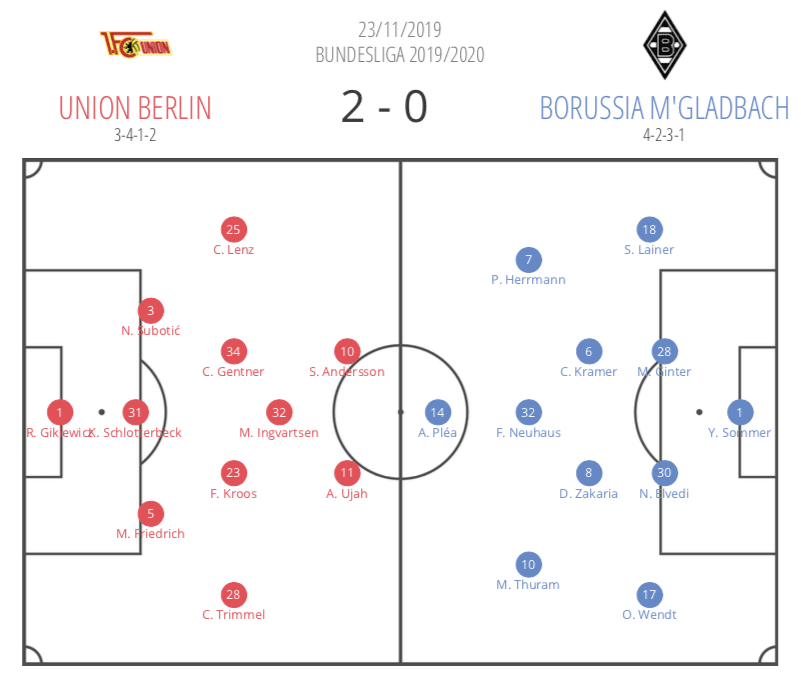
Gladbach, on the other hand, deployed a 4-2-3-1 system with a double pivot comprising of Denis Zakaria and Christoph Kramer. The latter one was supposed to support the central defenders when playing out by dropping between them in the opening stages of the game. As typical for Gladbach under Rose, the full-backs Oscar Wendt and Stefan Lainer were supposed to move up the line and provide the attacking department with crosses.
Gladbach’s build-up issues against Union’s man-orientations
Union Berlin decided to use a man-oriented pressing approach against Gladbach. They set up a high block within the opposition half. However, with a PPDA (“Opponent passes per defensive action in opponent’s final 60% of the pitch.” – Wyscout) value of 14.1, they did not press actively but rather prevented the opposition midfielders from receiving the ball.
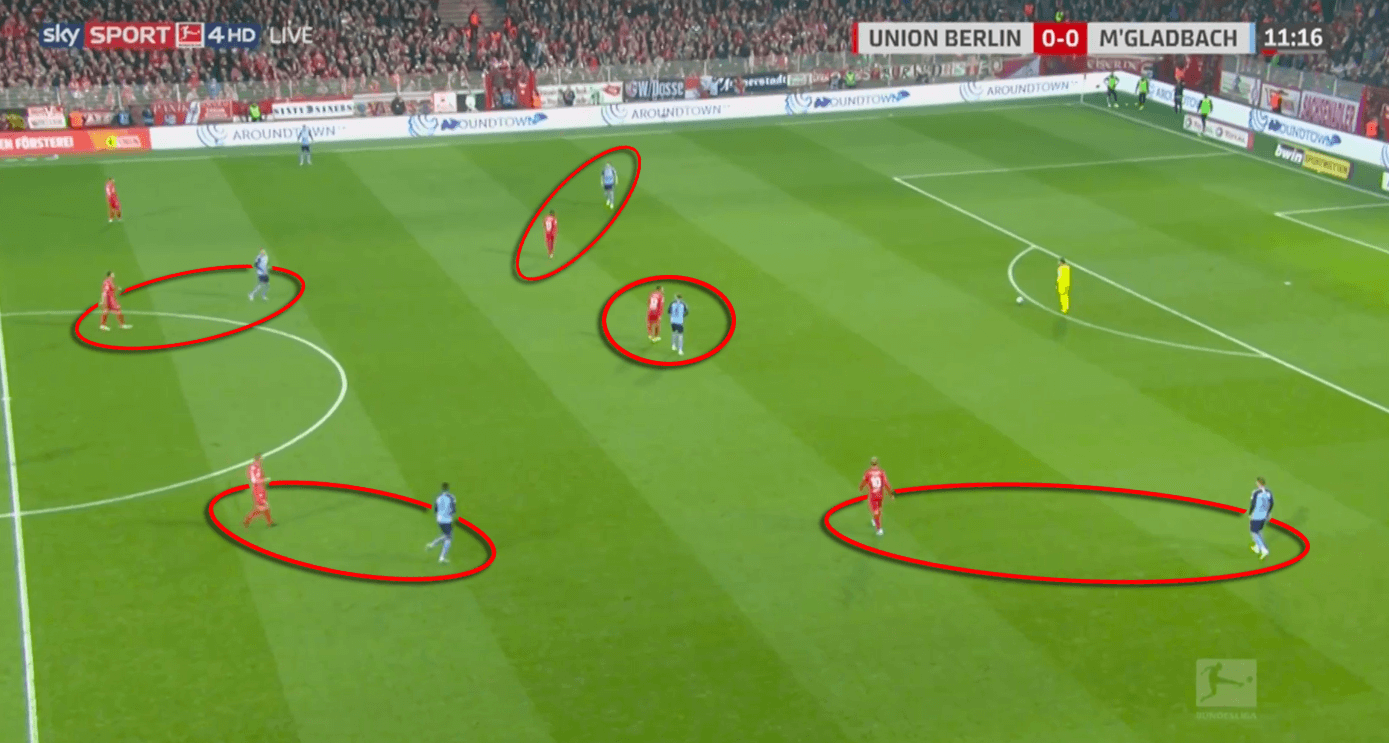
In the beginning stages of the game, Rose’s sides attempted to build-up with a back-three. Defensive midfielder Kramer therefore dropped between the centre-back pairing. As a consequence, Union’s advanced midfielder Marcus Ingvartsen followed Kramer. That created a 3-4-3 similar to Gladbach’s shape as displayed below.
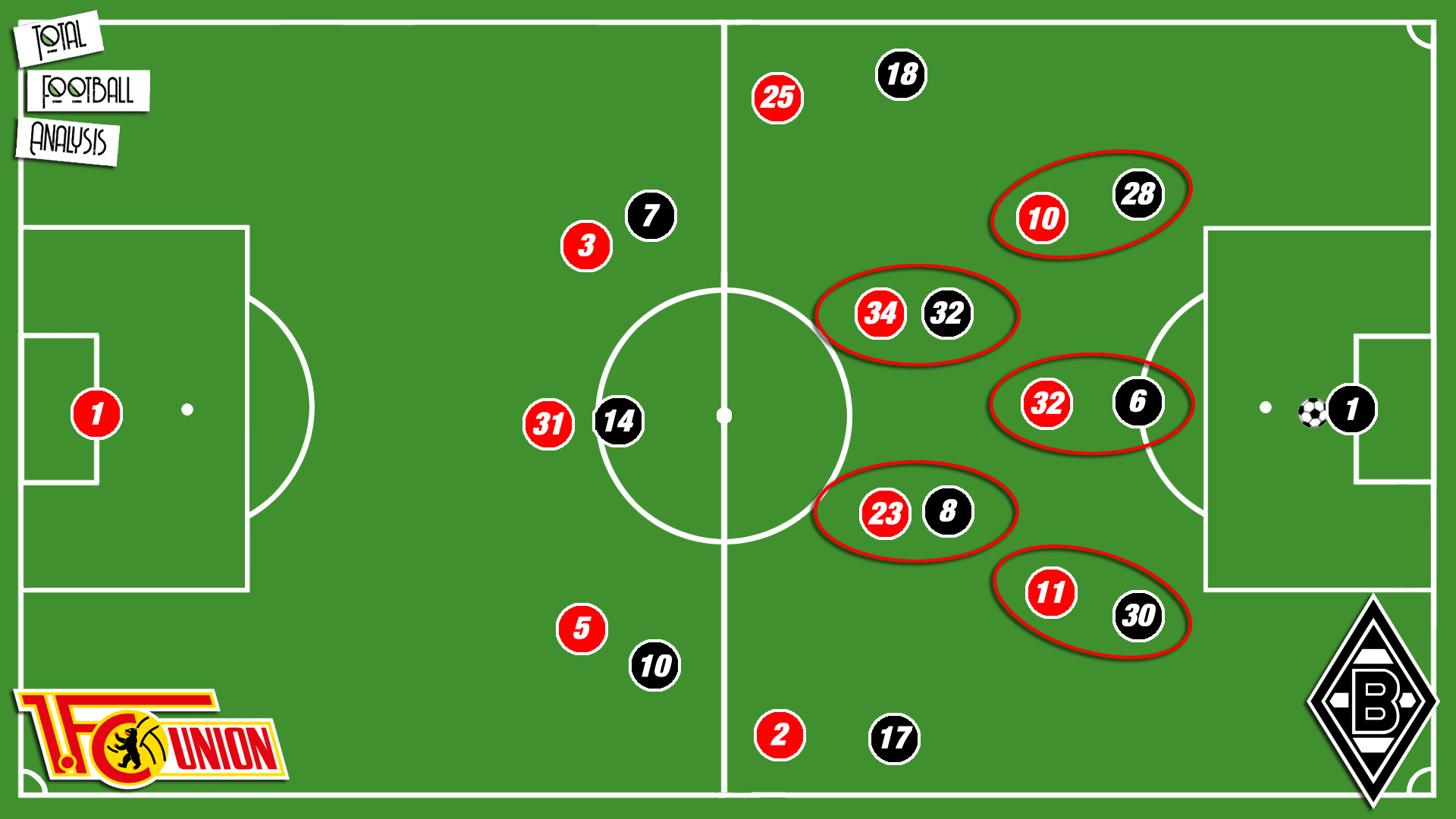
Gladbach’s midfielders attempted to make use of rotational movements in order to get rid of their direct markers. However, Union’s midfielders often followed their direct opponents or took over the marking responsibilities when the rotational movement lacked dynamicy. As a result, goalkeeper Yann Sommer was often forced to play long.
As Union Berlin were successful in shutting down every single passing option by man-marking, Rose decided to build-up with a back-four. Due to the more narrow positioning of the central defenders, Gladbach’s full-backs took over deeper positions during the build-up. That would force Union Berlin’s wing-backs higher up the pitch when pressing.
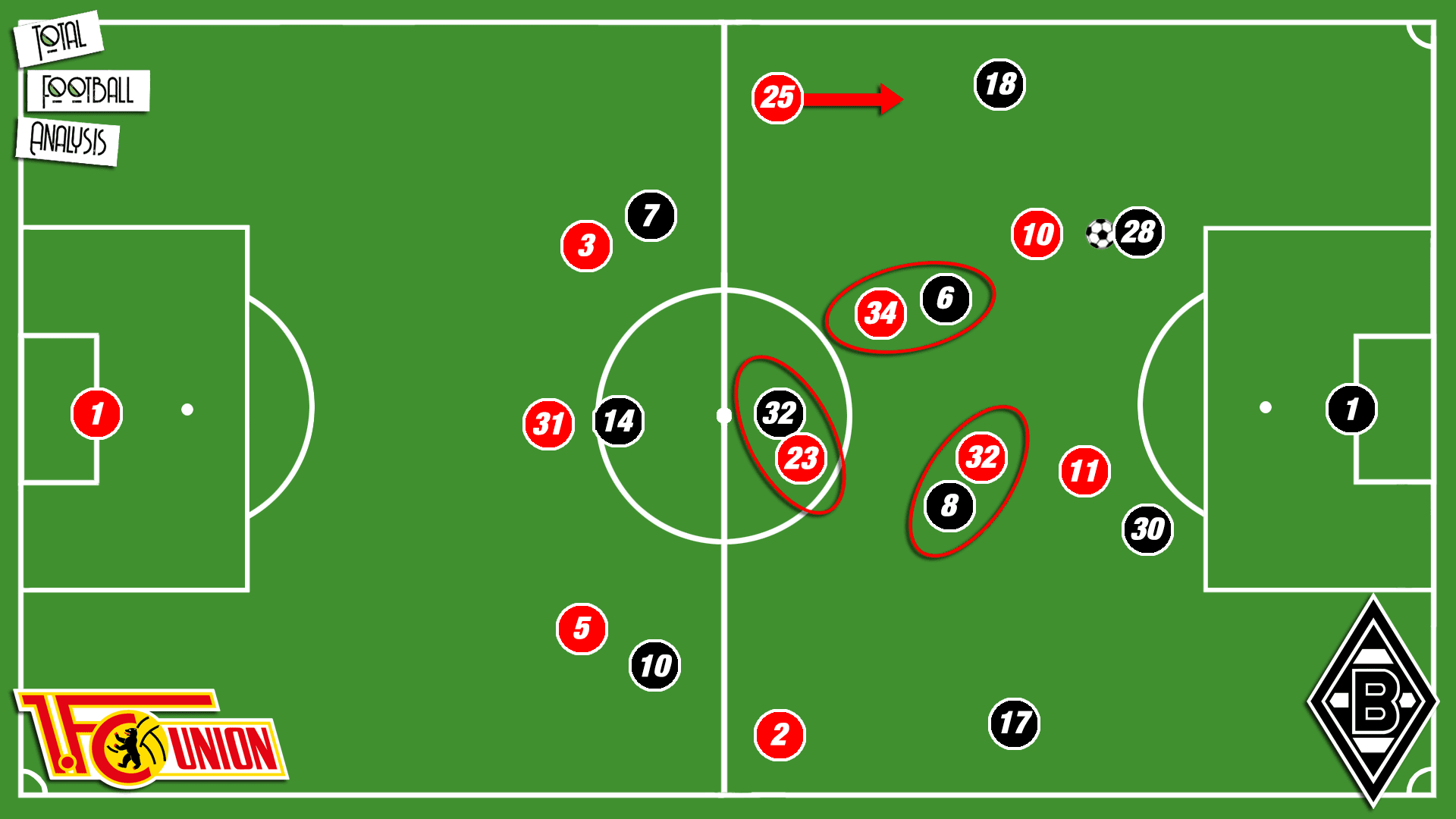
When depicting Gladbach’s issues against Union’s press, the importance of the half-space occupation became very clear. Often Gladbach missed to occupy the ball near half-space and, as a consequence, were forced to play around the opposition block.
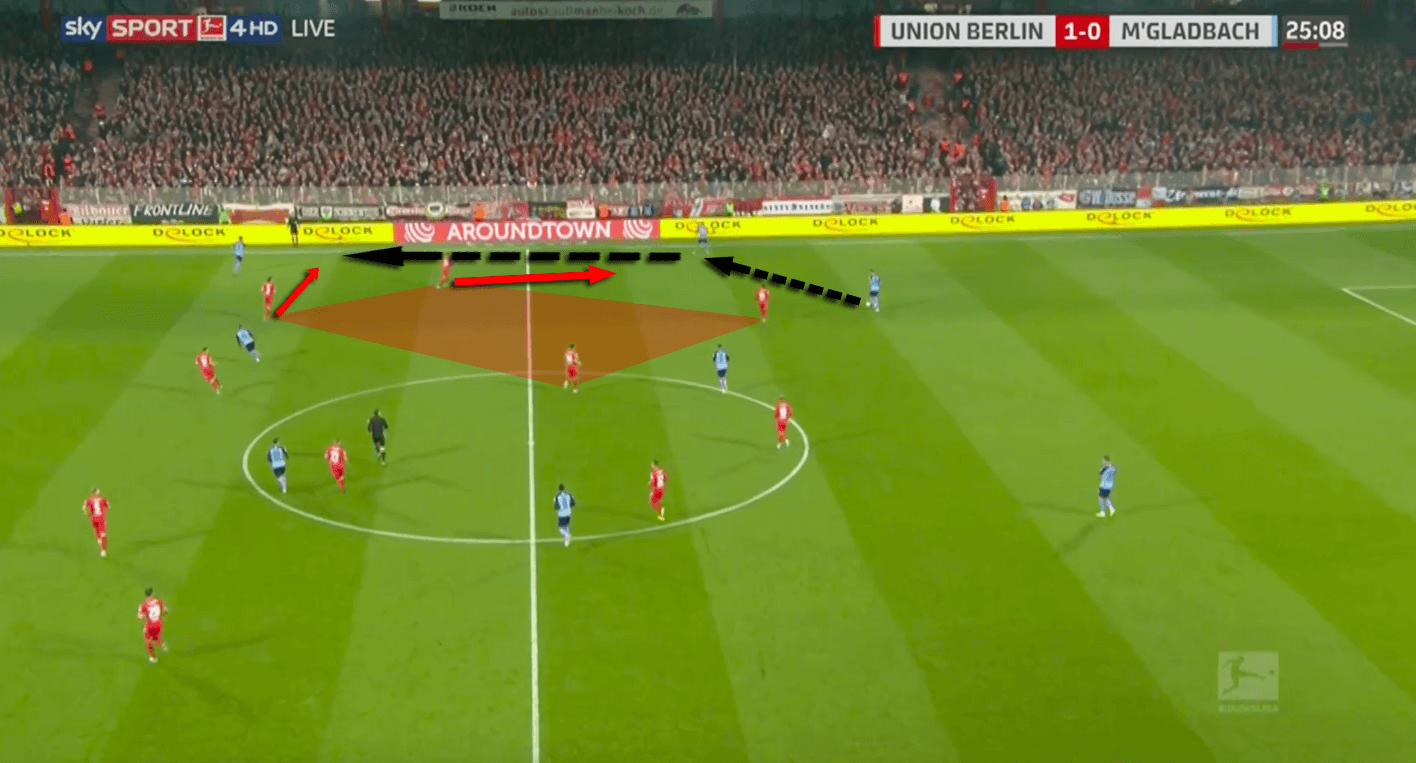
Since Union had enough players to react towards these patterns with their back five, Gladbach’s attempts to play around the block were not very promising. When Gladbach occupied the ball near half-space though, either this player was left unmarked or a midfielder of Union needed to follow which opened up space in the centre.
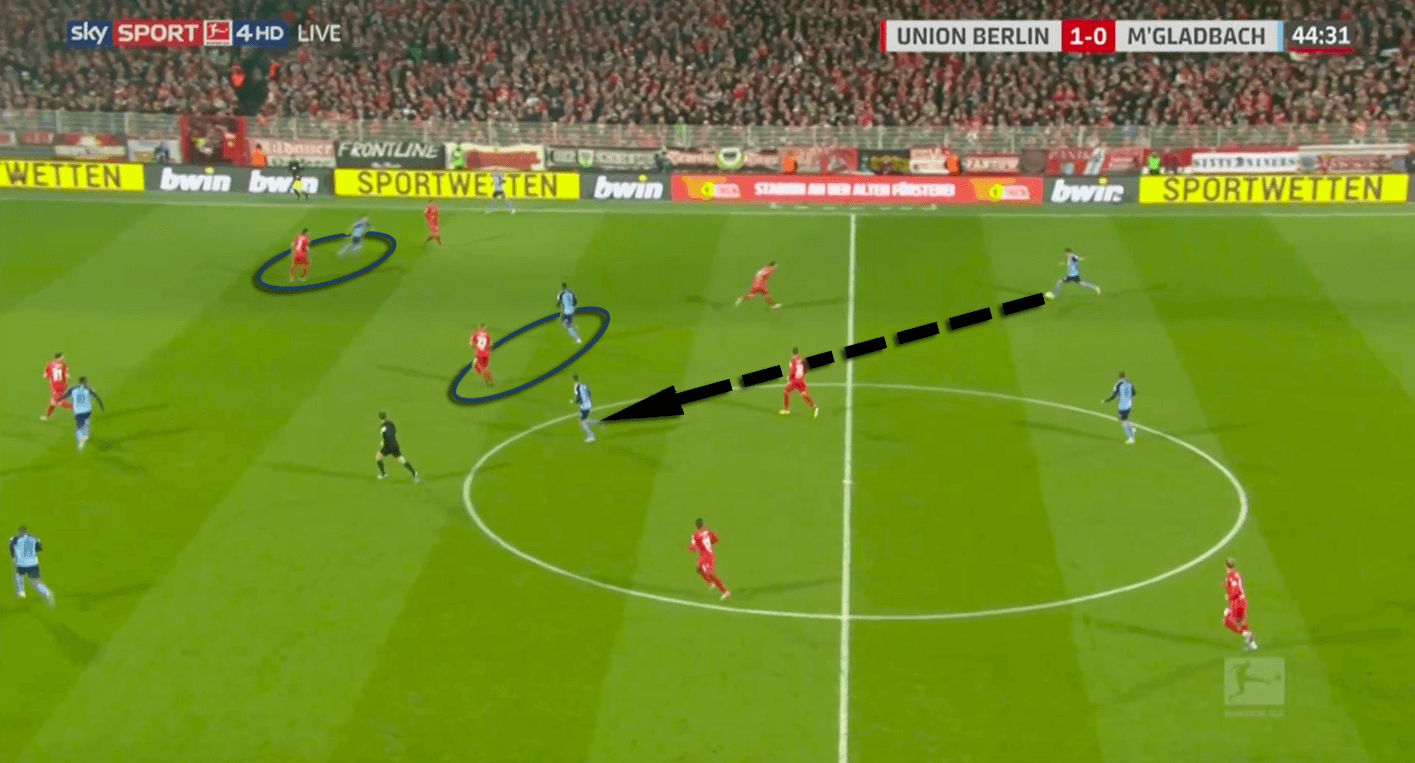
In such a situation, advanced midfielder Neuhaus received the ball (as shown in the image above) and diagonally switched play. Although this attack did not result in a shot on target, the pattern demonstrated a possible solution to penetrate Union Berlin’s defensive block.
Transition moments as the key moments
The way how Gladbach created their most promising chance was an offensive transition though. When Union Berlin were in the attack, Rose’s side could provoke a ball loss with the help of their midfielders shifting towards one side of the pitch.
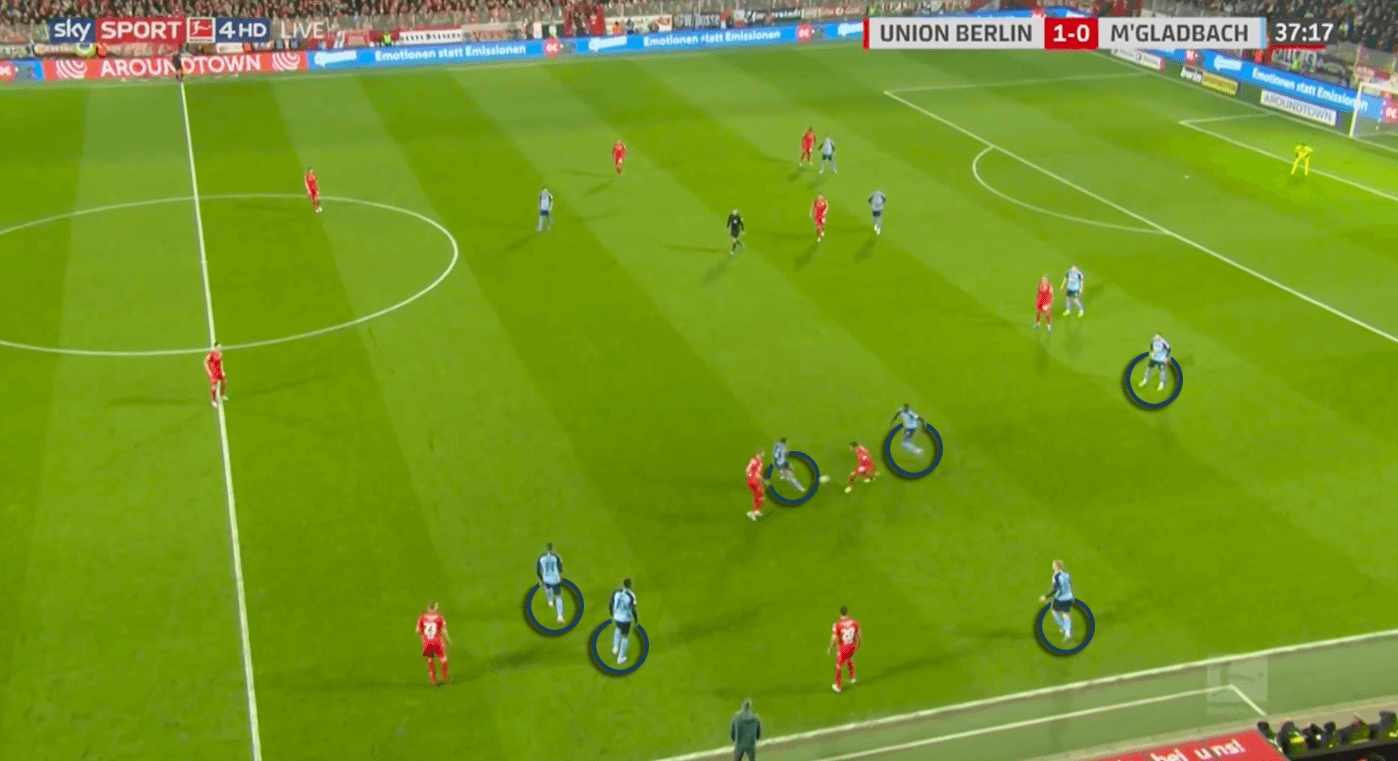
Since Union did not intend to switch sides, Gladbach did not cover ball far spaces. That allowed them to further decrease the ball near space.
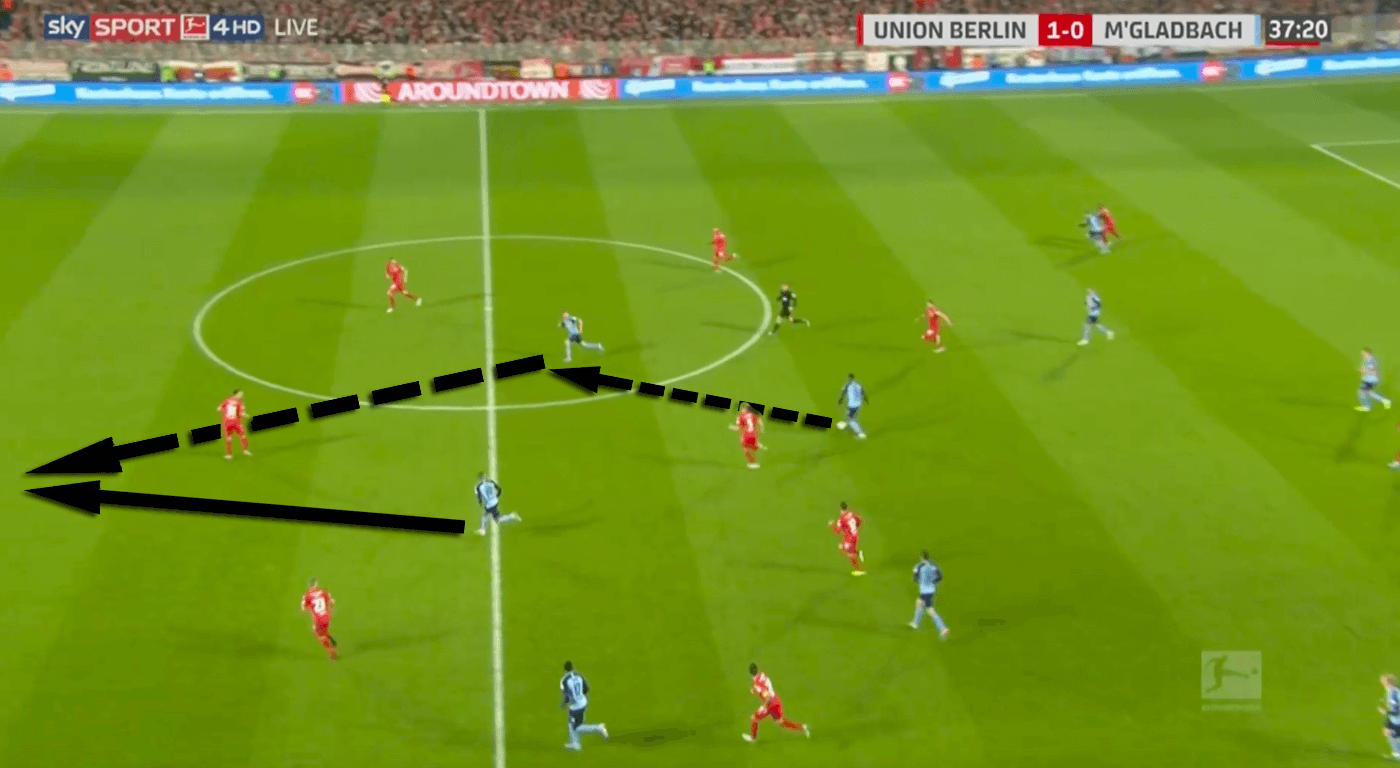
During build-up, Union would mostly play long balls towards their striking duo. Whereas both attackers also drifted towards the flanks in transition moments, they stayed in central areas during positional attacks. That allowed the attacking duo to lay the ball off to each other and secure possession within the opposition half. Whenever this was successful, the ball near wing-back quickly moved up the line to provide a wide option. From the wing, they mainly put in crosses.
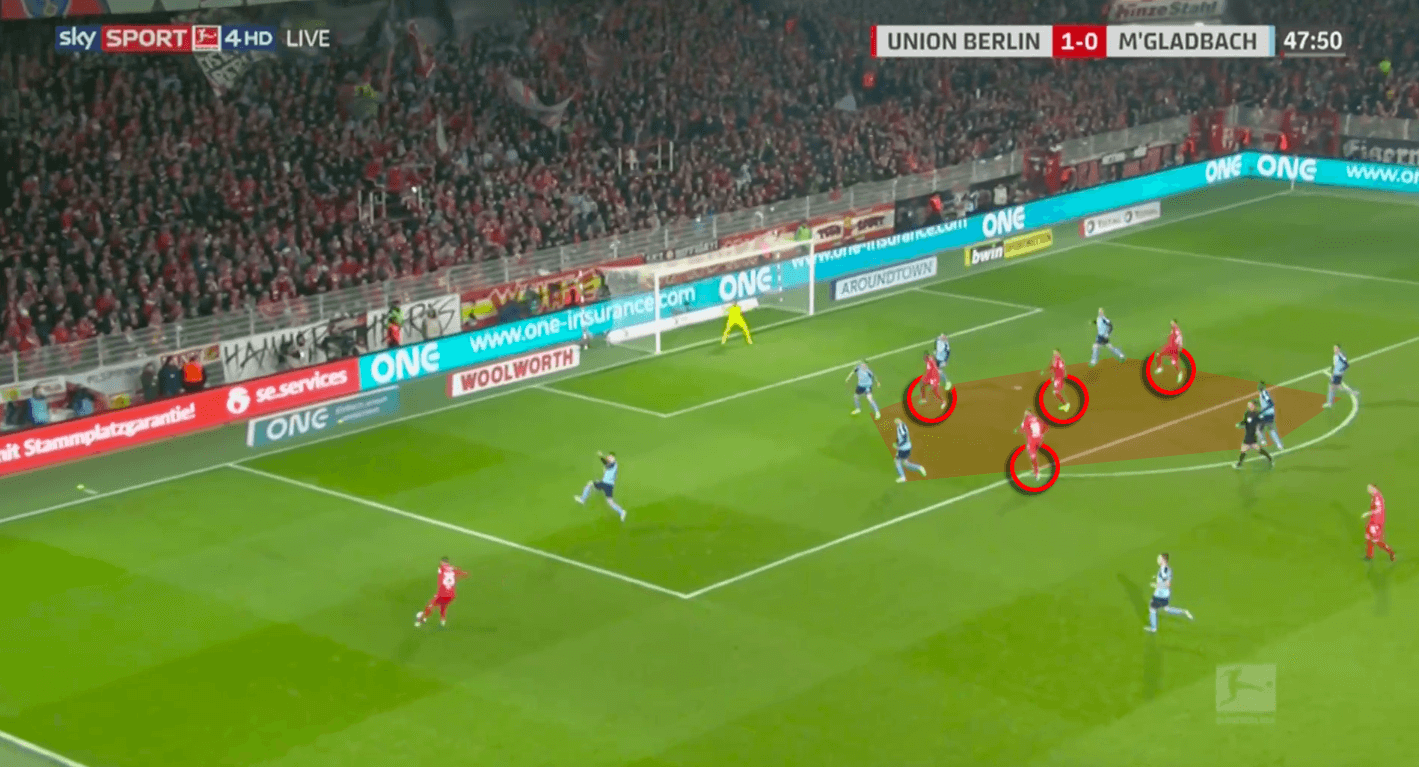
Union Berlin did not circulate the ball much in general. Instead, their intention was to get behind Gladbach’s full-backs after winning the ball to put in crosses and threaten the opposition goal with the heading abilities of their striking duo. Therefore, it is not a big surprise that their leading goal resulted from a counter-attack.
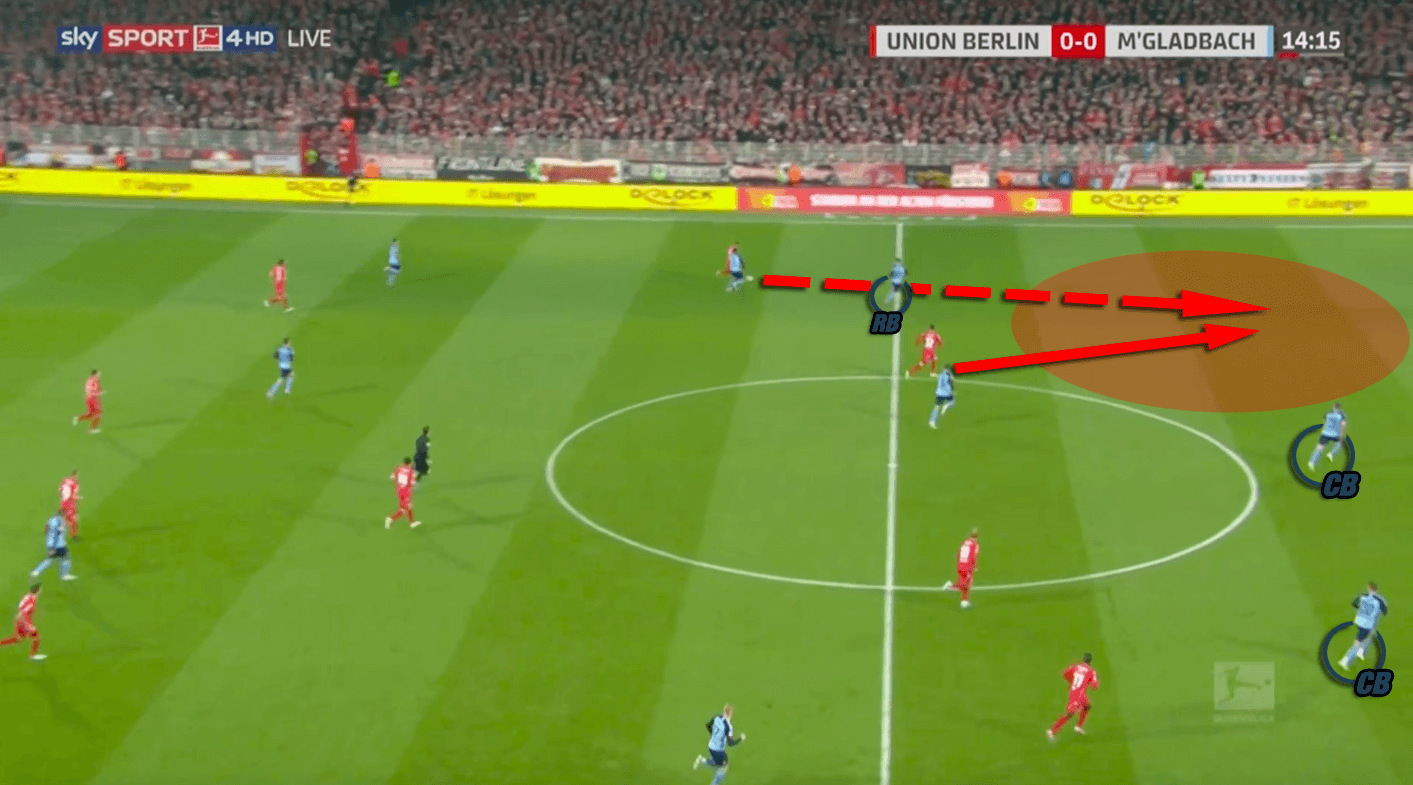
And due to the high positioning of Gladbach’s full-backs, Union Berlin can even outnumber Gladbach’s centre-back within the penalty area.
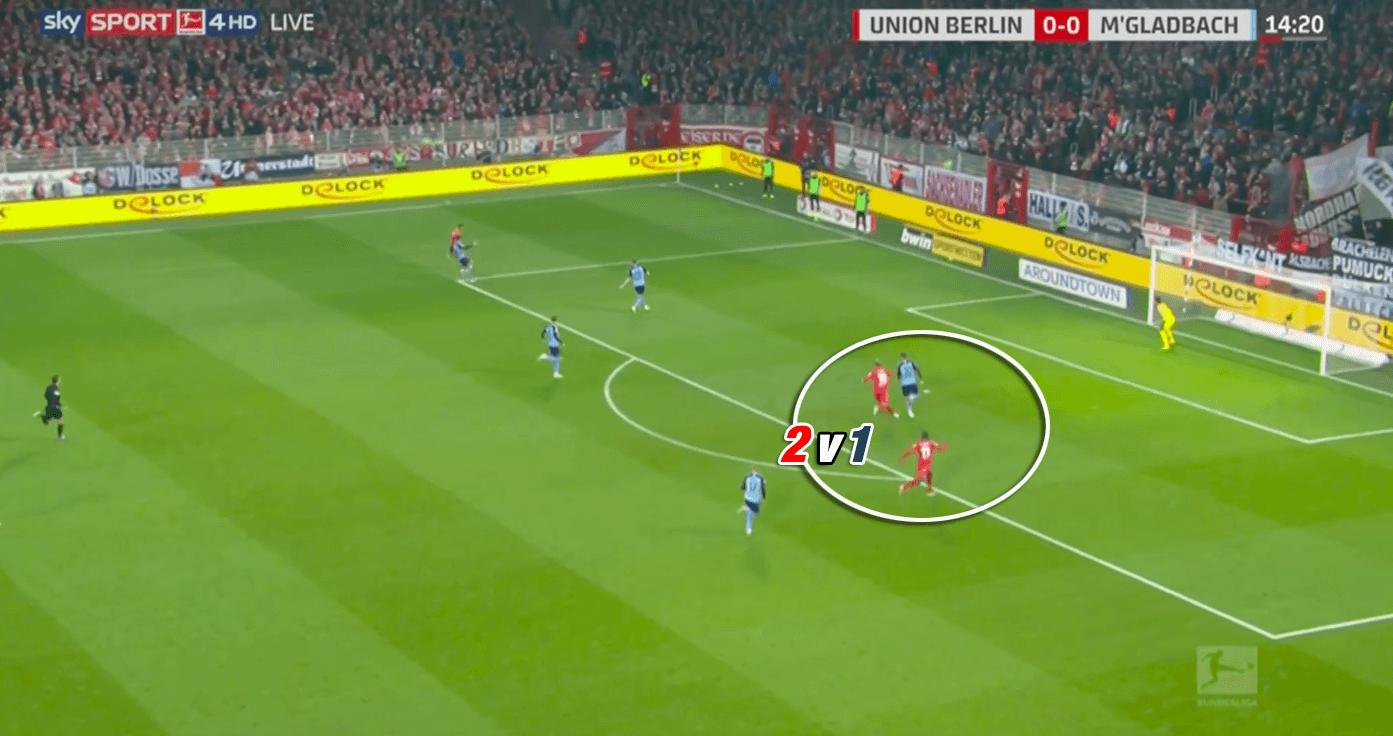
Gladbach’s second-half adjustments
In the second half, Gladbach slightly adjusted their build-up structure again. Instead of building up with a back-four, they used a line of three again. Different to the first half though, it was not a midfielder dropping into the backline. Instead, left-back Oscar Wendt stayed next to the two central defenders.
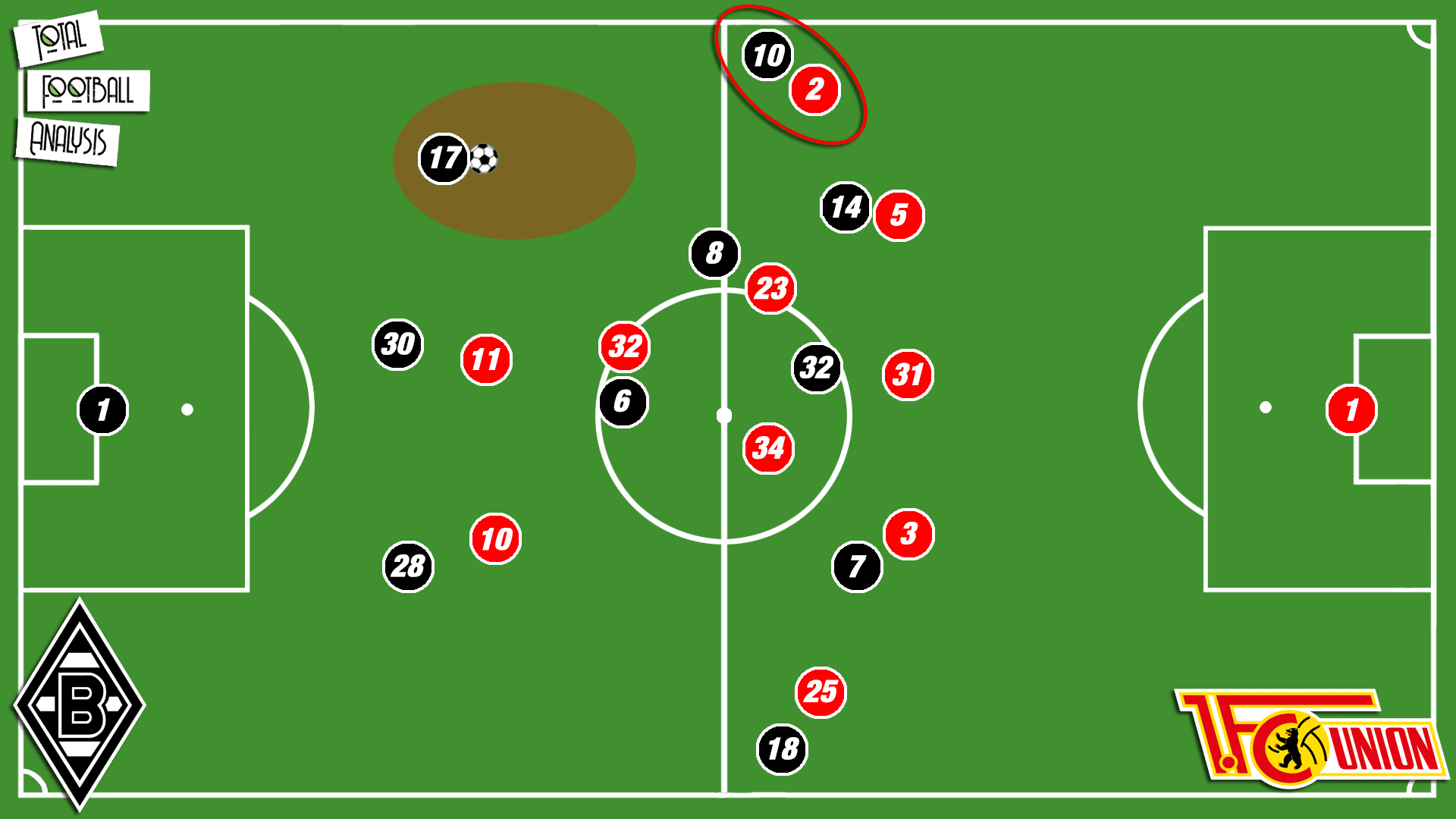
Since left winger Marcus Thuram provided width on this side, Union’s wing-back could not move up to press Wendt. That forced one of Union’s midfielders out of his position. This disabled Union to defend man-to-man as there were only two central midfielders left against Gladbach’s midfield three.
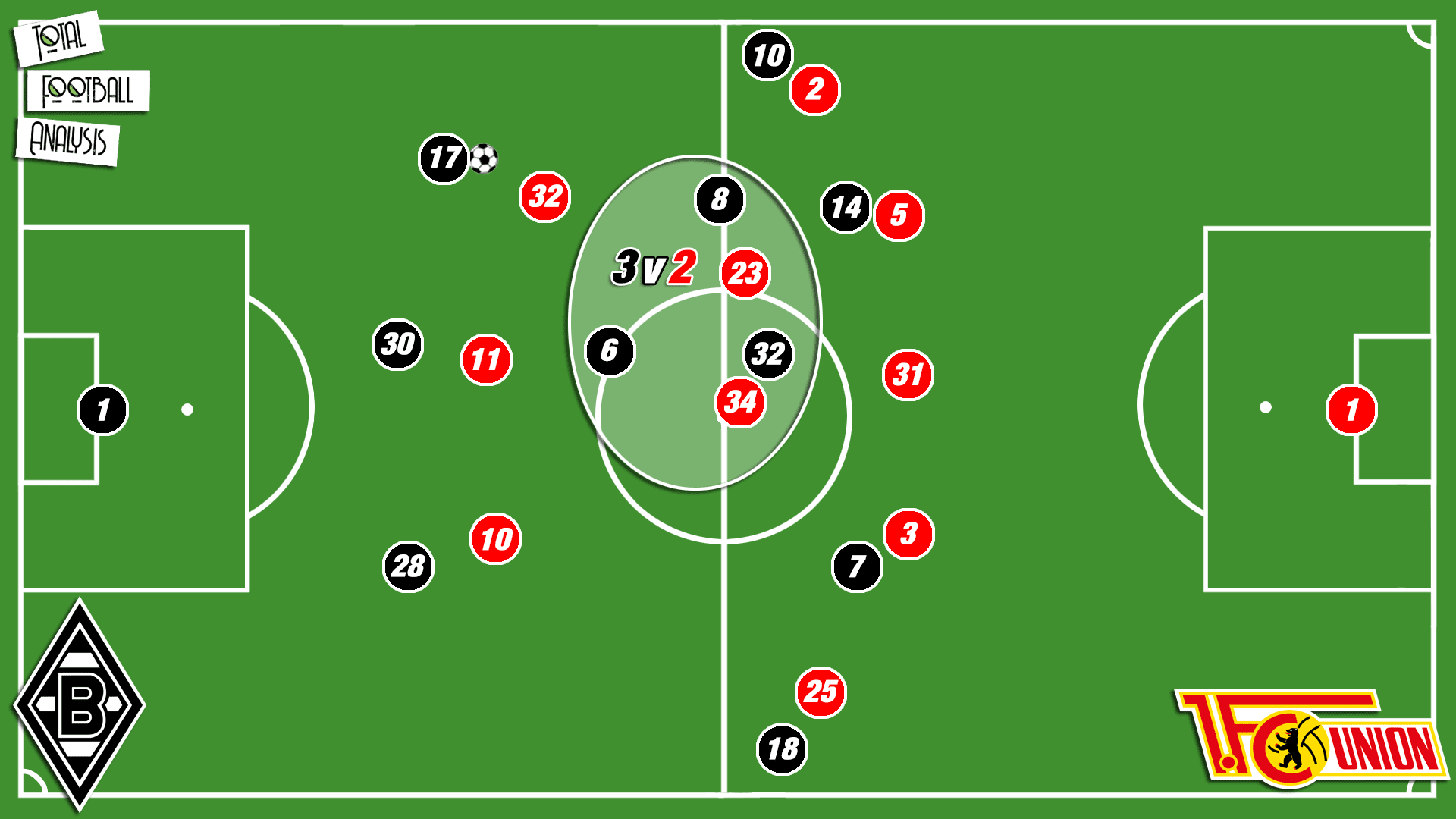
With this setup, Gladbach were less often forced to play long balls and could cleanly progress up the pitch instead like in the scenario below.
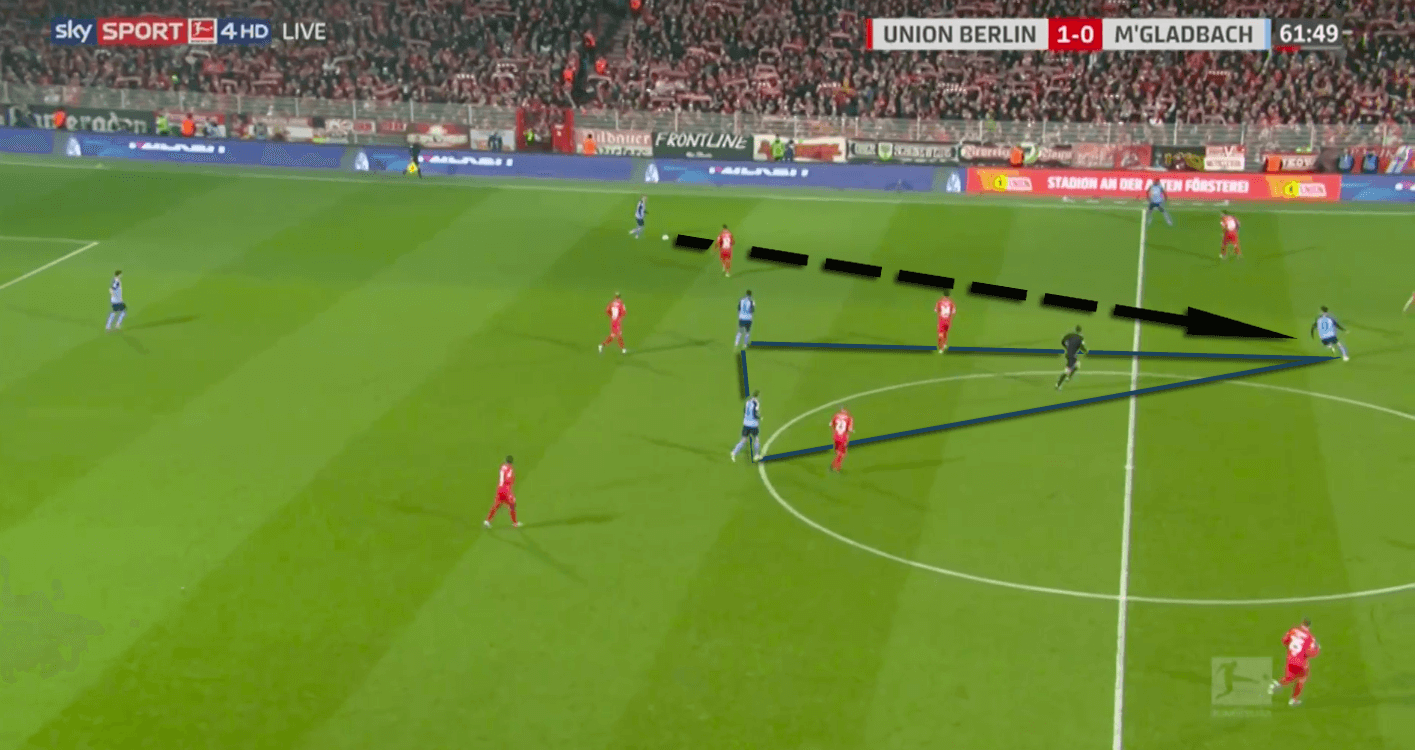
In addition to their changed attacking setup, Gladbach also changed their defensive approach. Rose’s side pressed way more aggressively than in the first half, which can be seen in the decrease of their PPDA from 15.4 in the first half to 7.0 in the second half.
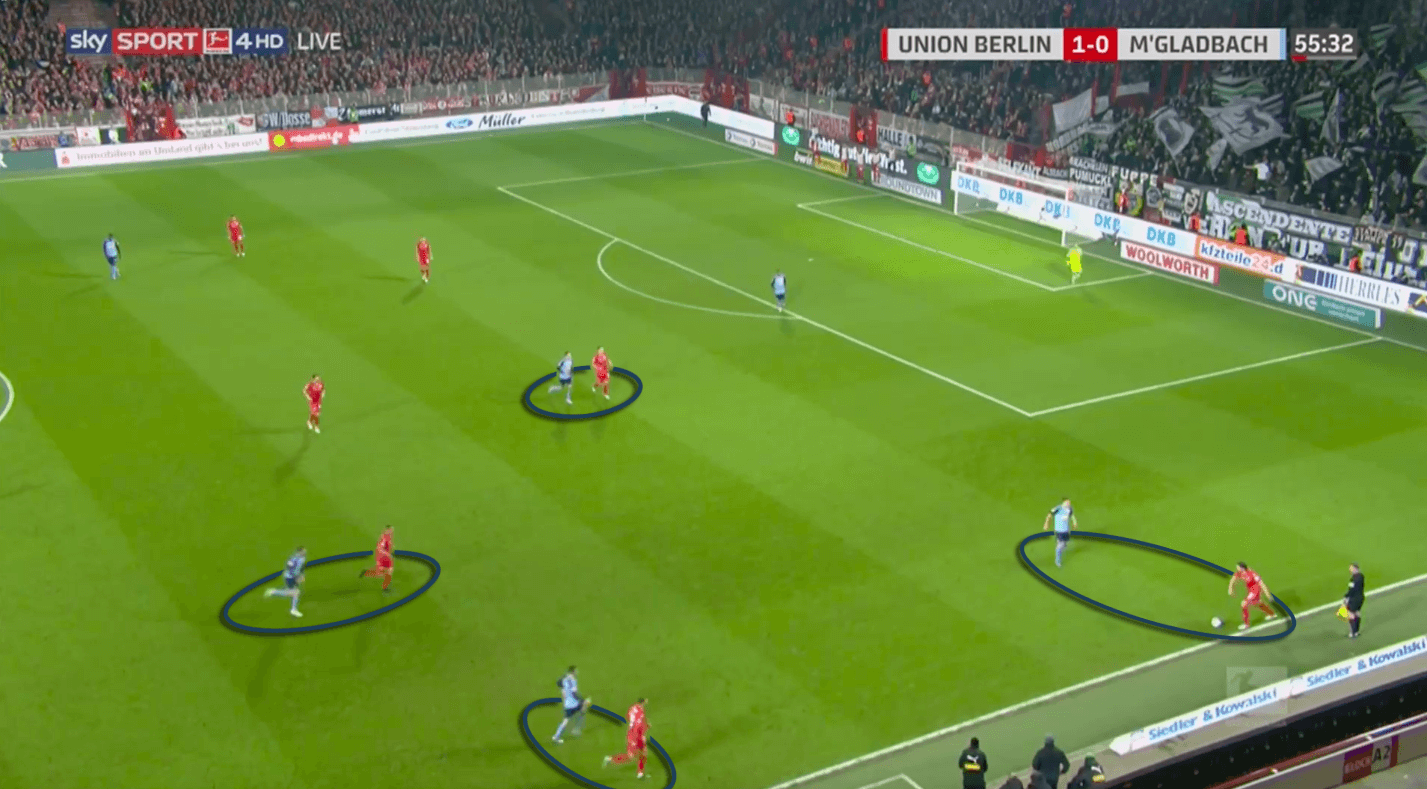
As a result of their press, Gladbach’s possession rate increased from 59% to 68%.
Union’s solid defence
However, despite their improved build-up and press, Gladbach still struggled to create chances. With an xG value of only 0.13 in the second half (0.92 in total), Gladbach failed to threaten Union’s goal. That was down to several factors.
Firstly, despite getting into the final third, Gladbach focused on putting in crosses from wide areas which were rather unpromising. Either the attackers were not positioned well and therefore unlikely to receive the ball, or Gladbach’s full-backs put in crosses from very difficult positions which decreased the chance of a precise ball.
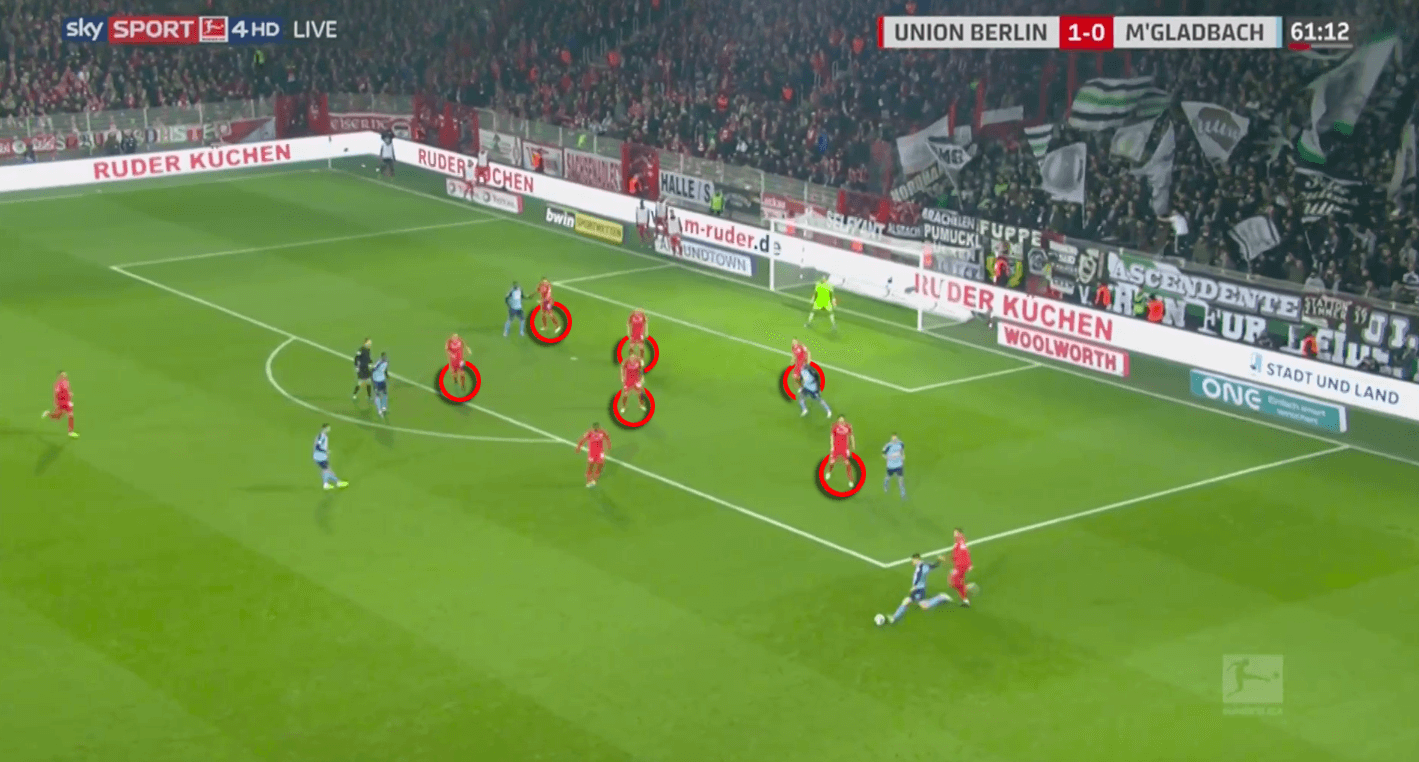
Another reason for Gladbach’s attacking issues was that Union’s defensive setup remained solid in the second half. With at least the back three and the double pivot moving into the penalty area, they were well prepared to defend Gladbach’s crosses. This compact shape in and around the penalty area enabled Union to keep the clean sheet.
Moreover, Union forced Gladbach into wide areas where they prevented any Gladbach player from receiving the ball in an open body shape or getting towards the end line.
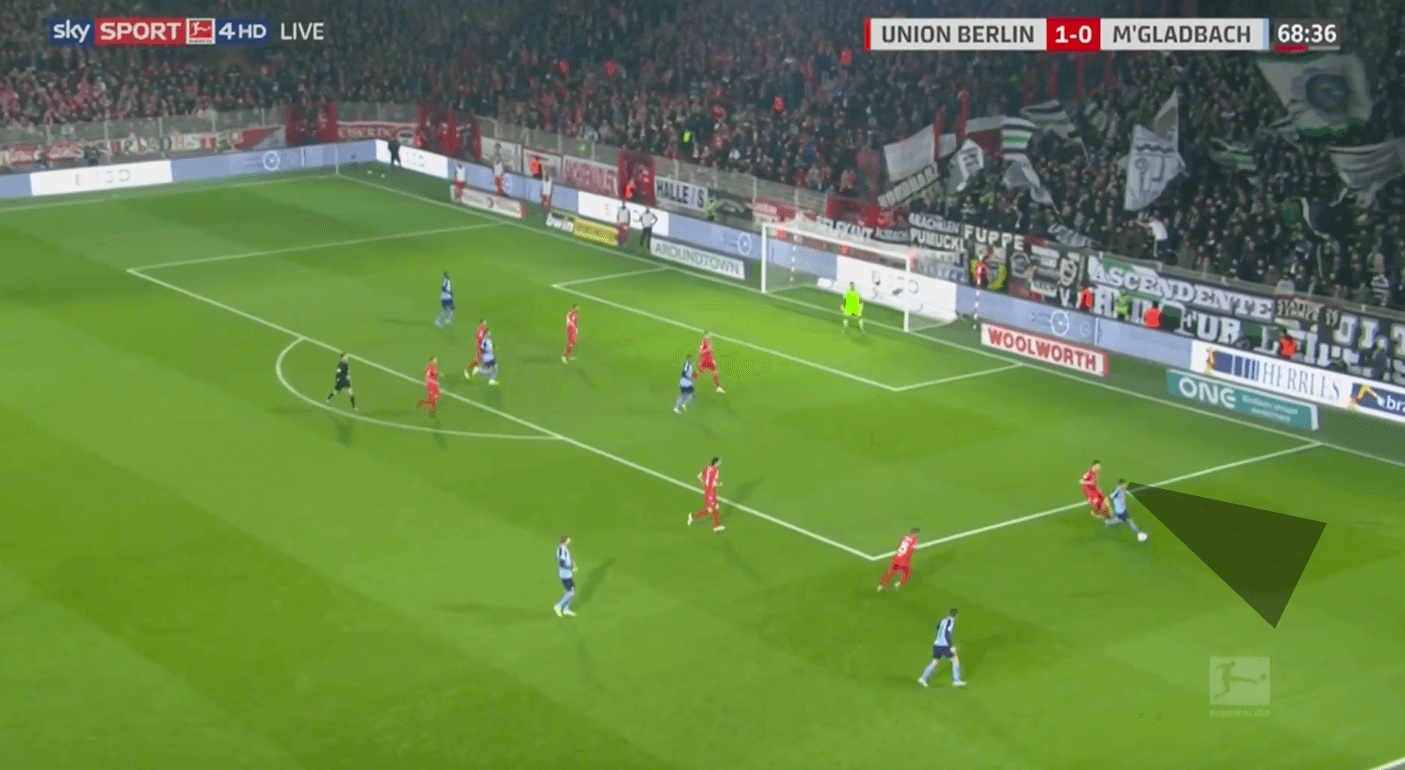
As one can see above, Union’s central defenders moved out to prevent Gladbach’s attackers from turning when receiving the ball with the back towards the goal. Facing away from the goal, they then failed to play into the penalty area and had to build up again or even lost the ball to an opposition defender.
Finally, Fischer’s side could score the second goal of the game clinch their win over Gladbach.
Conclusion
All in all, Union Berlin were capable of demonstrating their defensive strengths another time. With to their man-oriented pressing tactics, Fischer’s side prevented Gladbach from cleanly progressing up the pitch most parts of the game.
Gladbach, on the other hand, had to fight with their build-up issues in the first half while they faced attacking problems in the second one. Especially against defensive-minded sides, Gladbach will have to improve their attacking versatility.
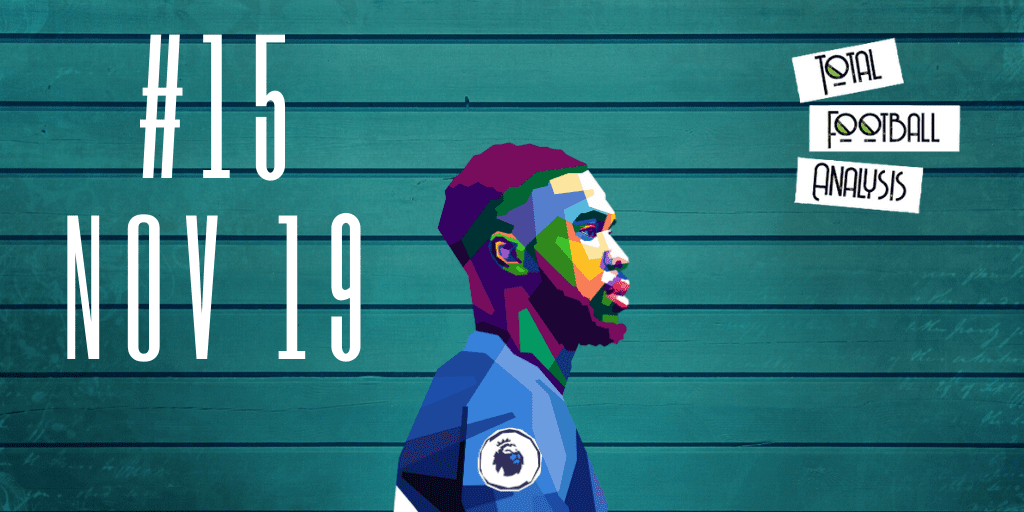
If you love tactical analysis, then you’ll love the digital magazines from totalfootballanalysis.com – a guaranteed 100+ pages of pure tactical analysis covering topics from the Premier League, Serie A, La Liga, Bundesliga and many, many more. Buy your copy of the November issue for just ₤4.99 here





Comments